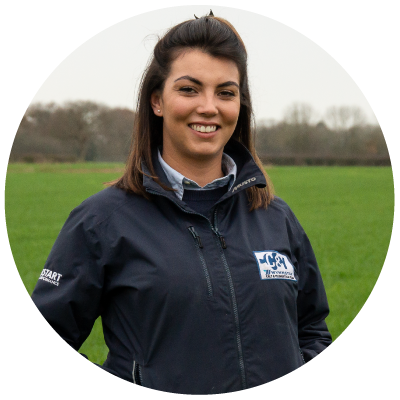When discussing colostrum management, attention is often focused on the calf. However, to produce a quality-first feed we need to begin with the cow in her transition period. Dam colostrum contains farm-specific antibodies making it so valuable to the calves on that farm, providing protection against the pathogens, they are most likely to encounter. Diet and management of the dry cow directly influence the quality of colostrum she is able to produce.
Vaccines can be used in the last few weeks of pregnancy to get specific antibodies into the colostrum which will be fed to the calf. For example, where calves are regularly challenged with scour in early life, it would be sensible to vaccinate the dam during her dry period to boost the level of antibodies specific to the most common causes of scour. Rotavec Corona provides antibodies to rotavirus, coronavirus and E.coli K99.
Note: To get the best result from any vaccine it is important not to overlook the manufacturers’ guidelines
Usage guidelines
- Storage temperature: Rotavec Corona is a temperature-sensitive vaccine and should be stored in the fridge, once the seal is broached, the bottle should be used within 8 hours.
- When to use: Pregnant cows/heifers should be vaccinated 3-12 weeks prior to calving (cows vaccinated too close to calving may have no presence of the antibodies in their colostrum).
- Accurate dose and route - single 2ml injection, administered intramuscularly.
- Calves are to be fed first colostrum and then transition milk from vaccinated animals for a further 8 feeds to allow maximum protection.
After successfully manufacturing the best colostrum within the udder, we need to harvest it as soon after calving as it is practically achievable. For every hour colostrum is not collected from a cow, it reduces in quality by 3%; a 12-hour delay results in 36% reduced quality (Dr Rick Dumm, 2019).
The next challenge is getting it to the calf’s abomasum as quickly and as hygienically as possible. With bacteria capable of doubling every 20 minutes, colostrum needs to be fed, refrigerated, frozen or pasteurised ASAP. It is important to note that pasteurisation will reduce the number of bacteria present, however, it cannot eliminate it and the colostrum still needs to be handled appropriately. Any highly-contaminated colostrum should be discarded.
Colostrum, as a first feed, is vital because it contains the immunoglobulins which we aim to get passed through the gut wall into the bloodstream, essential to providing immunity. However, colostrum also contains higher levels of protein, fat and hormones than milk; feeding for a further 3 to 4 days can provide local protection making it more difficult for pathogens to attach to the gut wall and cause damage.
On occasion, sufficient, high-quality dam colostrum may not be available (or not be convenient to harvest quickly). Artificial colostrum can be used to either replace the colostrum feed or boost the quantity and/or quality of dam colostrum harvested. It is important, particularly for the first feed that this artificial colostrum is high quality (look to buy a product which will act as a replacement, not a supplement). Nettex Gold colostrum is 100% UK-sourced, full-fat, pure dried colostrum, which would be a suitable replacement, providing a greater surface area in the digestive tract to improve the utilisation of nutrients fed.
For further information or help with putting together farm-specific protocols contact a member of the Wynnstay Calf & Youngstock Team, in-store SQP or Animal Health Representative.










